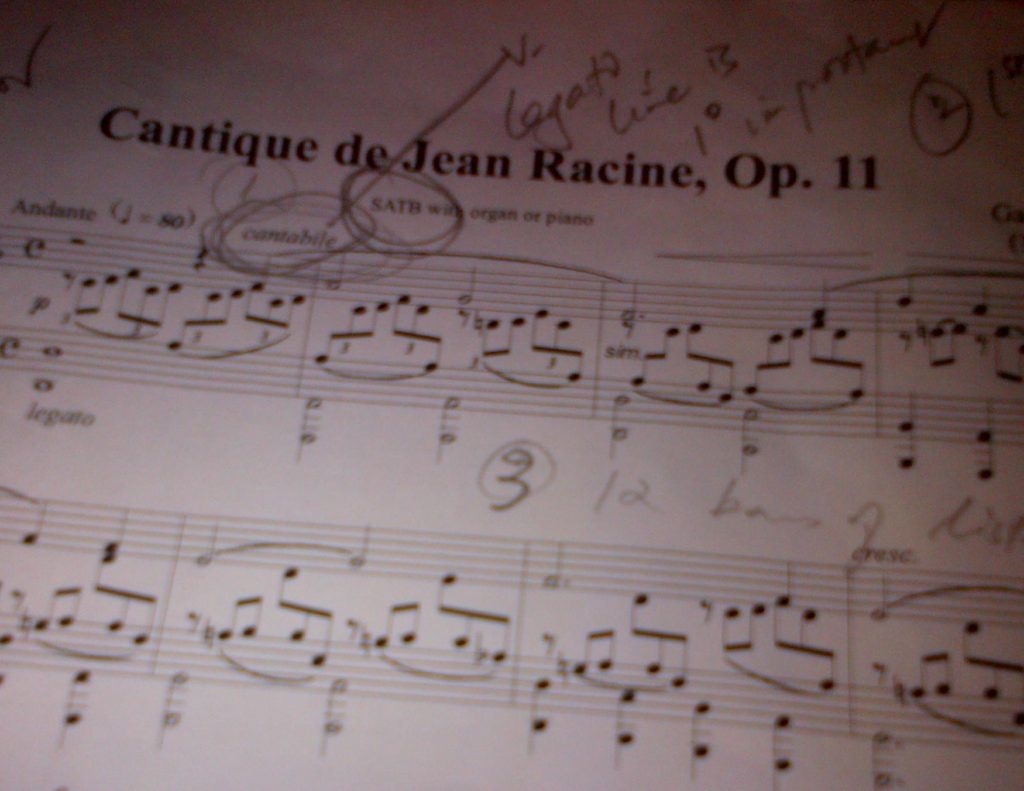If you ask me which piece of French music I am most passionate about, it may be Ravel’s Valses noble et sentimentales. Or Gabriel Faure‘s Requiem. But, in the end, I may go for the aria “Mon coeur s’ouvre a ta voix” from Camille Saint-Saëns‘ opera, Samson et Delilah, especially the version sung by Maria Callas or Angela Gheorghiu. Or the love duet (“il se fait tard“) between Marguerite and Faust at the end of Act 2 of Charles Gounod‘s opera Faust. Or, any arias from Massenet‘s opera, Manon – well, a favourite is the duet between Manon and Des Grieux in Act 2.
Manon as a story is fabulous material for an opera. The tale of a young girl, Manon Lescaut, about to join a convent, meeting Des Grieux, falling in love, and then subject to much intrigue from family and others as well as all manners of injustices, the lovers prevented from living their lives together in peace, and with Manon dying in Des Grieux‘s arms in the last scene, is an attractive one, and Massenet’s music is wonderful.
But equally, one of the most famous devil stories of them all – the tale of Faust – makes for great dramatic material. As always, Goethe‘s work has a religious element – with Marguerite refusing the easy way out relying instead on the faith that her true innocence will also be her salvation. Interestingly, while the Parisian premiere of the opera was not particularly successful, Faust became the most popular French opera in the late 19th century. The New York Met opened its doors in 1883 with the work and performed it at the beginning of every season for decades. Of interest also, the popular musical Phantom of the Opera contains much music from Gounod‘s Faust – for example, Christine sings Anges Purs, Anges Radieux (pure and radiant angels), the song at the end of the opera where Marguerite calls upon the angels in heaven above for salvation, in a number of places in the Phantom.
But then I will remember Cesar Franck, who is a Belgian who worked for most of his life in Paris and later on took on French nationality, whose Prelude, Chorale and Fugue, especially Artur Rubinstein’s rendering of it (Rubinstein championed this piece throughout his life), is one of my absolute favourites, and whose cello sonata in A major (it has to be Jacqueline du Pré on the cello) is spectacular, both the cello part and the piano part. But then, maybe we should not consider him entirely French …
Most of all, however, I will settle for Saint-Saëns‘ Piano Concerto number 2 in G minor, Op.22 especially its beautiful first movement.
Saint-Saëns (by the way, a true Parisian, having been born in Paris), it has to be said, probably occupies the stylistic ground between Liszt and Ravel. Written in only about 2 weeks when he was 33 years old, the piano concerto number 2 was premiered by the composer himself on the piano. By then, Saint-Saëns was already a successful organist who worked at the Église de la Madeleine in Paris and had received widespread critical acclaim for his great skill on both the organ and the piano. It is therefore not a surprise that this is a challenging work requiring both technical brilliance and great expressiveness. The piece is also notable for starting with a recitative-like but somewhat improvisatorial piano solo passage, as if it were starting with a cadenza rather than an orchestral exposition.
I have good company in loving the piece – Liszt himself, the great virtuoso-pianist-composer, to whom Saint-Saëns sent a copy of the score, liked the piece and wrote to Saint-Saëns that he “greatly applaud” the work and expect it to be very successful.
Interestingly also, Saint-Saëns had been an early champion of Richard Wagner‘s music in France, teaching his pieces and premiering some as well. He had stunned even Wagner himself when he sight-read the entire orchestral scores of 3 of Wagner’s operas prompting the comment of being “the greatest musical mind of the era“. Intriguingly also, he stayed close to Franz Liszt and maintained a fast friendship with his pupil Fauré, but hated the music of Franck and that of Claude Debussy.
Speaking about Fauré, a very beautiful short choral piece is the Cantique de Jean Racine, composed when he was only 19!
Saint-Saëns‘s friendship with Liszt was also important for one of his most popular works: it was Liszt who encouraged Saint-Saëns to finish his opera Samson et Delilah and also used his influence to put up the premiere of the piece in Weimar, Germany.





